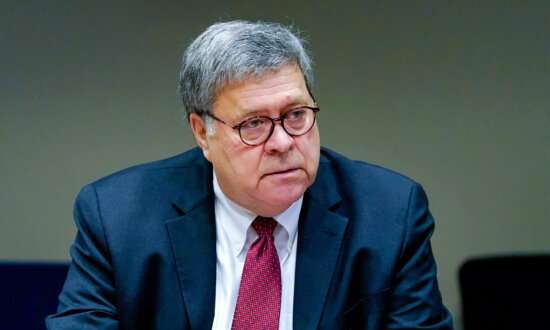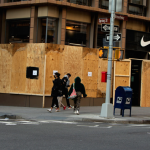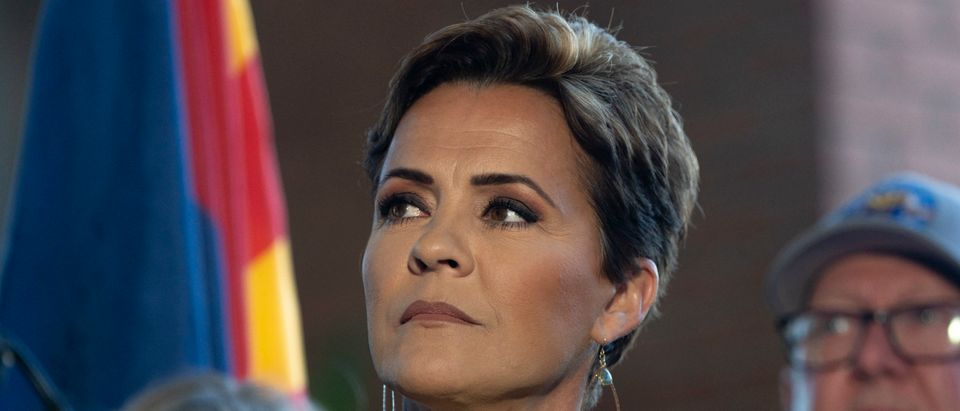WND –
If President Trump still believes, as he said last year, that there’s something “very fishy” about the official Independent Counsel report on the still-mysterious death of Bill Clinton’s White House deputy counsel Vincent Foster, he might want to reconsider one of his new candidates for nomination to the U.S. Supreme Court.

In making the Kavanaugh announcement, the White House noted the following credentials: “Brett M. Kavanaugh is a Judge of the United States Court of Appeals for the District of Columbia Circuit. Before his appointment in 2006, Judge Kavanaugh was a partner at Kirkland & Ellis LLP, served as Assistant to the President and Staff Secretary, and was a lawyer in the White House Counsel’s Office and in the Solicitor General’s Office. Judge Kavanaugh also served as a law clerk to Justice Anthony M. Kennedy of the Supreme Court of the United States, to Judge Alex Kozinski of the United States Court of Appeals for the Ninth Circuit, and to Judge Walter K. Stapleton of the United States Court of Appeals for the Third Circuit. Judge Kavanaugh is a cum laude graduate of Yale College and Yale Law School.”
Conspicuously not mentioned in that biography is Kavanaugh’s role in leading the badly flawed investigation into the death of Vincent Foster in July 1993.
In fact, Kavanaugh took over that investigation when his predecessor, attorney Miguel Rodriguez, resigned, saying in a letter to Kenneth Starr dated Jan. 17, 1995, because evidence was being overlooked in a rush to judgment in favor of suicide and closing the grand-jury investigation, WND reported last year.
The smoking-gun information was reported by WND exclusively early in the 2016 presidential campaign in the form of two documents: a two-page letter of resignation and a 31-page memo both written by Rodriguez, Starr’s original lead prosecutor.
Click here or on the image to see Rodriguez’s letter
Click here or on the image to see Rodriguez’s complete memo
Rodriguez refers in his letter to photographs showing a wound on Foster’s neck – a wound that did not exist according to accounts in Starr’s official government report.
The obvious questions: How could a suicide victim be found with two wounds – a .38-caliber gunshot into the mouth that exited through his head and another wound on the right side of his neck that one of the paramedics described as a small-caliber bullet hole? And why would government investigators go to great lengths to cover it up?

Judge Brett Kavanaugh
The breathtaking discovery of these documents in the National Archives and Records Administration was made in 2009 by researchers Hugh Turley and Patrick Knowlton. But Knowlton was not just any amateur researcher. He was a grand-jury witness who happened to be in Fort Marcy Park the day Foster died and noticed discrepancies that were never addressed by Starr’s report.
Allan Favish, a Los Angeles attorney who took a Freedom of Information Act case all the way to the Supreme Court seeking access to photographs of Foster’s body as it lay in the park, said he started looking into the case shortly after Foster’s death in 1993. It was Favish who brought the National Archive discoveries by Turley and Knowlton to the attention of WND.
You can read Favish’s brief submitted to the U.S. Supreme Court here.
The Rodriguez letter blows holes in the government’s conclusion that Foster’s body had a single self-inflicted gunshot wound.
“At meetings and via memoranda, I specifically indicated my disagreement that there existed ‘overwhelming evidence’ that Foster committed suicide where he was found at Ft. Marcy Park,” Rodriguez wrote to Starr in his resignation letter.
Rodriguez went on to cite 12 ways the investigation was compromised.
Witness statements had not been accurately reflected in official FBI reports, he told Starr.
Even more troubling was the treatment of death-scene photographs.
Four paramedics recalled seeing Foster’s neck wound when they had their memories “refreshed” by “new photographic evidence,” Rodriguez told Starr. Rodriguez indicates the FBI had originally shown these witnesses “blurred and obscured blowups of copies of (Polaroid and 35mm) photographs.”
What the FBI had apparently done was to use a Polaroid camera to take pictures of the original Polaroid pictures, essentially producing blurry “copies of copies.”
The FBI claimed some of the original photos taken by Park Police had been under-exposed and were basically useless. But when Rodriguez found the original images buried in a file, he took them to an independent photo lab used by the Smithsonian Institute and had them enhanced. He was astounded at what they showed. What had once been a blurred spot on the neck, possibly a blood stain as claimed by the FBI, was now clearly something much more.
One of the paramedics, Richard Arthur, described it as a bullet hole about the size of a .22-caliber round.
In January 2001, Favish filed a motion requesting permission to take a deposition from Rodriguez so he could question him about the photos. His motion was denied by a U.S. District Court judge in Los Angeles and ignored by the appeals court in D.C.

Hillary Clinton and Vince Foster
Rodriguez went on to explain in his resignation letter that immediately after he produced the new photographic evidence he came under personal attack by Starr’s staff.
“After uncovering this information, among other facts, my own conduct was questioned and I was internally investigated,” Rodriguez wrote. “I steadfastly maintained, and continue to maintain, that I, at all times, conducted myself as an experienced and trained prosecutor, with years of federal prosecutorial experience and federal grand jury experience.”
Rodriguez concluded that he believed there was sufficient evidence “to continue the grand jury inquiry into the many questions surrounding Foster’s death.” Instead, he was told the grand-jury probe would be abruptly ended and his work would be placed under review.
“In effect, for raising the above questions, I was forced out of my job,” he wrote to Starr. He ended his resignation letter to Starr with a stinging conclusion: “I no longer believe in the dynamics of the decision-making process presently employed in your Washington, D.C., office.”
The other key document found in the National Archives is a 31-page memo from Rodriguez that also refers to the second wound on Foster’s neck.
At pages 18-19 of the memorandum, Rodriguez stated that one of the photos “clearly depicts a dark, burnt appearing, blood area on VF’s neck.”
He further stated that he reminded one of Starr’s deputy counsels that “only two identical sets of 18 polaroid photographs were provided to OIC [Office of Independent Counsel]. One photo clearly depicts a dark, burnt appearing, blood area on VF’s neck. The D.C. medical examiner who observed the photo stated that, if the picture were cropped and without knowing more, the burnt blood patch looked like a bullet hole or puncture wound. Based on my own experience and training I am confident the traumatized area was caused by a ‘stun-gun’ or ‘tazer’ [sic] type weapon.
“In addition, I pointed out that the third EMT to the body, EMT [Richard] Arthur, concluded that there was a puncture wound or bullet wound on VF’s neck. I offered that such wound(s) would explain the upper right shoulder blood.”
Rodriguez’s findings from the enhanced photographs were never included in the Starr report.
Rodriguez’s memo also raises questions about Foster’s purported motives for suicide – some of which tie in to Hillary Clinton’s roles in administration scandals involving Whitewater and the White House Travel Office.
The memorandum, dated Dec. 9-29, 1994, includes the subject title: “November 29, 1994, Meeting Concerning Foster Death Matter and Supplemental Investigation Prior to Grand Jury.”
Here Rodriguez gives harsh criticism of the investigation conducted under previous independent counsel Robert Fiske, who had concluded there existed “overwhelming evidence” in support of death by suicide.
That was simply not true, according to Rodriguez.
“The Fiske counsel report conclusions are not fully supported by the existing record and that the report contains misstatements and supposed facts that are inconsistent with the record,” Rodriguez wrote.
And Fiske’s claim of “overwhelming evidence” to “support voluntary discharge of the weapon in suicide or support that [Foster] was alone the afternoon of his death” was not supported by the facts on record, according to Rodriguez’s December 1994 memo.
“… there is not ‘overwhelming’ evidence to support the report’s conclusions regarding motivation for suicide,” he wrote, then added that “Before any discussion, [Mark] Tuohey disagreed.”
Tuohey was Starr’s deputy counsel. Starr’s report would end up confirming Fiske’s contention of “overwhelming evidence” in support of suicide.
About motivation for suicide, Rodriguez wrote:
“Regarding motivation, generally, I pointed out that numerous ‘state of mind’ issues are inconsistent with suicide,” he continued, adding that Foster had “indicated to a number of individuals that he was optimistic about work-related events to come and that he was planning future family events.”
In his memo Rodriguez identifies then-first lady Hillary Rodham Clinton as “HRC” and Vince Foster as “VF” and describes a conversation the two had about the White House Travel Office, which had come under a cloud of suspicion in the media.
He writes: “On the afternoon of Thursday, May 13, 1993 ‘[HRC] told [VF] that she heard about problems in the travel office. The GAO report did not mention HRC’s conversation and provided no insight into HRC’s source for these complaints. On the same day, HRC also asked [White House Chief of Staff Mack] McLarty ‘about the situation in the travel office.’ The GAO report ignored this discussion as well. Again, on May 13, 1993, ‘[VF] subsequently informed [HRC] that Peat Marwick was going to conduct a review of the [travel office matter].’ The GAO report provided no information about this conversation either.”
It’s like Favish wrote last year when Trump said there was something very fishy about the Vincent Foster case: “If Trump’s attorneys ever gave him the same quality of legal service that Fiske and Starr gave to the American people, I suspect that Trump would say: ‘Your Fired!’”
That raises this question: Does the president really understand who it is he’s considering for a U.S. Supreme Court nomination?














